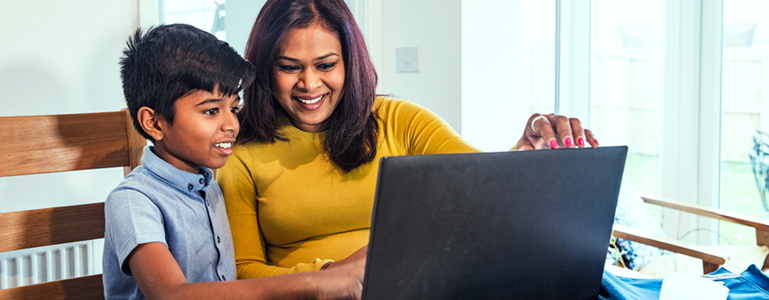It’s not always easy talking about technology, screen-time, and media choices with our children and teens. Read on for suggestions from Mindful Digital Life‘s Claudia L’Amoreaux.
For many parents, a “Trial and Error” approach is our default, especially when it comes to conversations about technology, media, and devices. The problem with a “Trial and Error” approach is that we’re often left with things not working out, or blown trust levels and alienated kids, which can take some time to repair. I prefer an approach that focuses on “Experiment, Reflect, and Iterate” when it comes to creating family technology conversations that lead to genuine insight and transformation.
How do you replace “Trial and Error” with “Experiment, Reflect, and Iterate?”
- Remember you’re all in this together. Conversation is co-creative. Do it with your kids, not to them, from the very beginning. Experiment.
- Show up. Be patient. Have fun. Include good food. Magic can happen when you commit and show up over time.
- Suspend judgment. Listen with an open mind—observe brainstorming basics to encourage free-flow of ideas and to build trust levels.
- Practice transparency. Share your own challenges. You’re modeling how to reflect. Dig deeper.
- Reflect together on how the conversation went. What worked? What didn’t and why? How can you make it more fun, more challenging, more intriguing next week?
- Co-design your next experiment-in-conversation.
I subscribe to filmmaker, parent, and M.D. Delaney Ruston’s Tech Talk Tuesdays blog. In her most recent post, Delaney models transparency with her readers as she reflects on her experience co-viewing TV shows with her teenagers. Delaney writes:
“I try to watch a show with my kids now and then and keep my mouth shut through the whole show—I usually fail a bit and blurt out something like ‘Oh that would never happen’ and then quickly kick myself and reapply my metaphorical duct tape. Then, I wait for a day or two and say something positive about the show. For example, for the show How I Met Your Mother I might say something like, ‘It’s amazing how they come up with so many jokes one right after the other.’ What I really want to say is ‘Have you noticed that every other joke seems to be about sex,’ but I hold back. They already know that I feel that way and that is why they are defensive about all these shows and my co-viewing. But they also know that I work hard to see things from many perspectives, so they are willing to engage with me … if I am thoughtful in how I am approaching things.”
At the end of her post, Delaney offers suggestions for a tech talk about popular values of today’s TV shows—her ideas might be a good source for one of your technology conversation experiments. And if you haven’t already, you might want to subscribe to her Tech Talk Tuesdays blog.
Good luck and please reach out to Parents Place if you need help figuring out how to talk with your child or teen about technology issues.
Claudia L’Amoreaux helps parents and young people navigate the social and emotional complexities of “digital life.” She has worked at the intersection of technology and education as an international consultant, speaker, curriculum designer, and coach for 25 years. Claudia writes the weekly Mindful Digital Life blog.
Join Claudia for the online Parents Place workshop: Rethinking Technology for Your Family: Foundations for a Mindful Digital Life, Thurs., Nov. 8, 1 — 2 pm.
This blog post originally appeared on www.claudialamoreaux.com.

